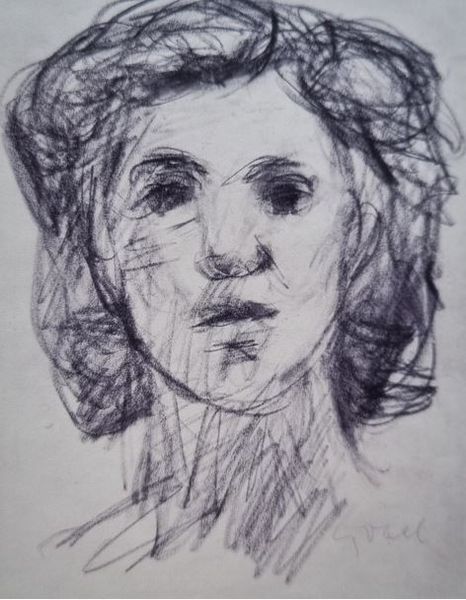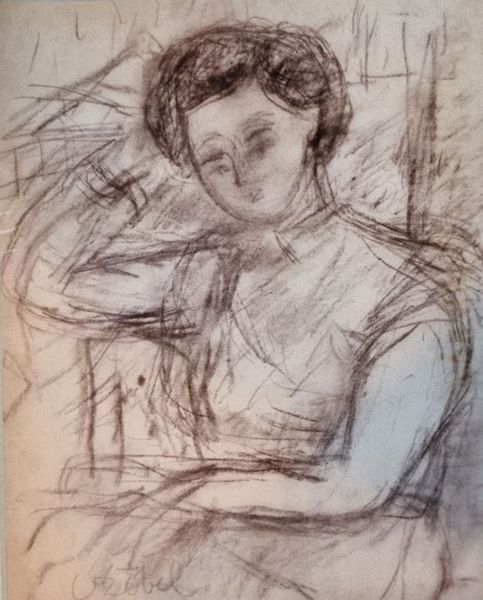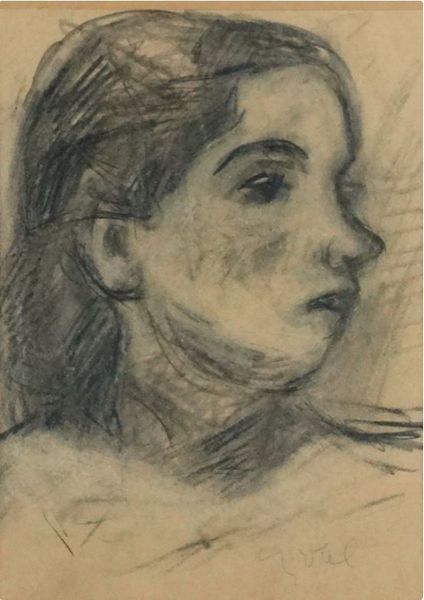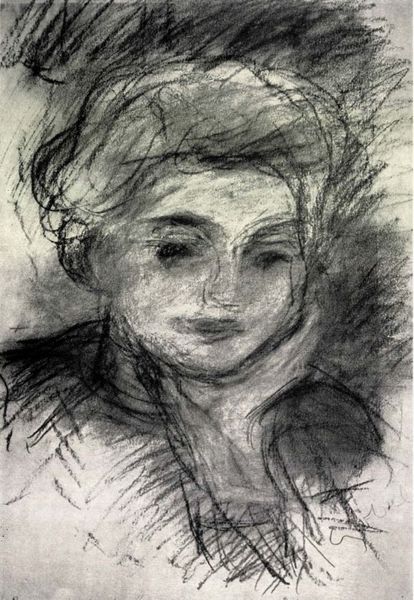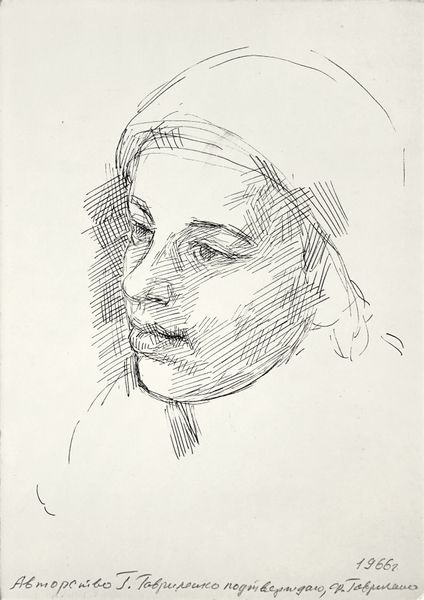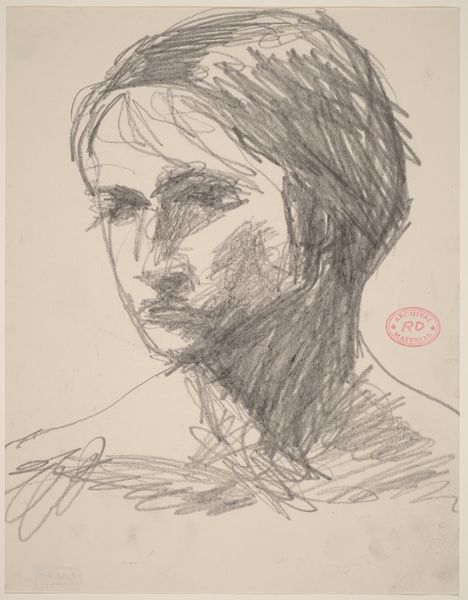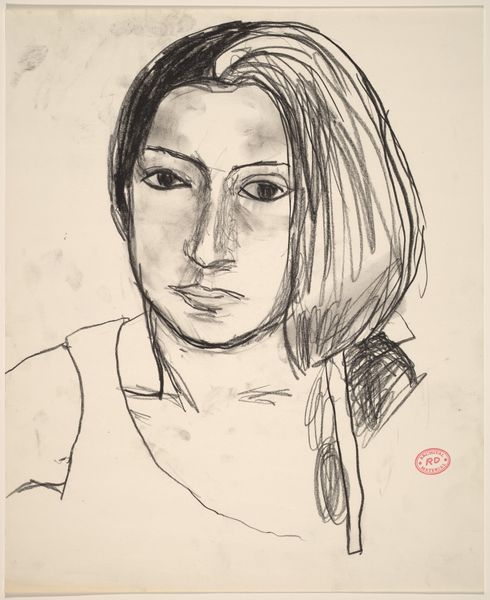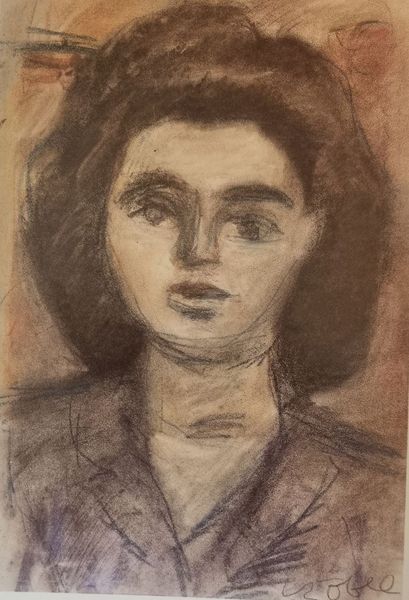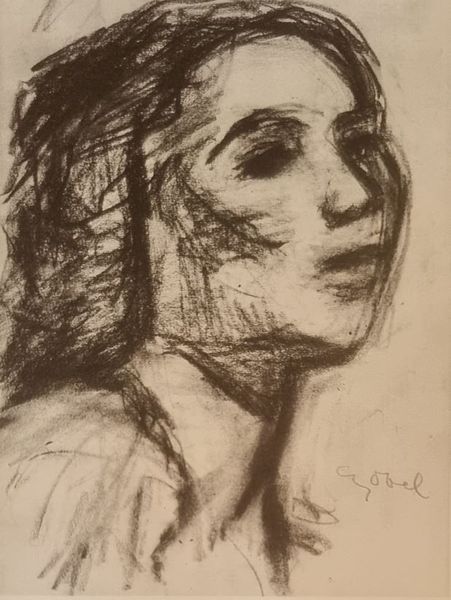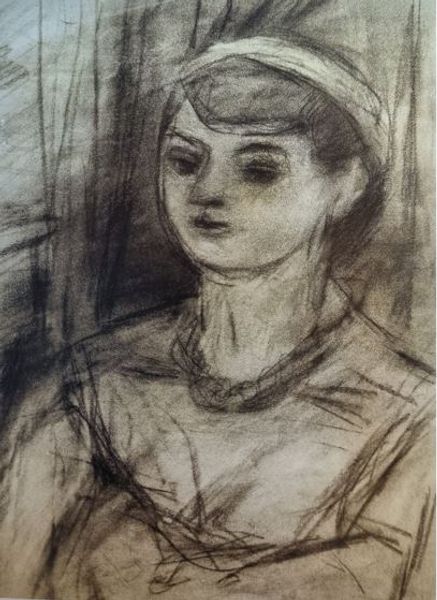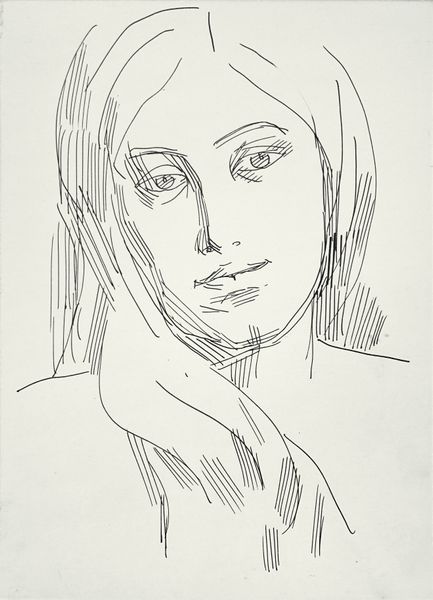
drawing, charcoal
#
portrait
#
drawing
#
expressionism
#
portrait drawing
#
charcoal
Copyright: Bela Czobel,Fair Use
Curator: The artwork we're viewing is titled "Woman Portrait," attributed to Béla Czóbel. It’s a charcoal drawing. Editor: My first impression is one of understated tension. The loose, almost frantic charcoal lines create a sense of unease beneath the serene gaze of the woman. There’s a quiet drama here, a vulnerability made palpable. Curator: Czóbel, while often associated with Fauvism due to his vibrant color palette in painting, explores a very different sensibility in his drawings, particularly his portraits. The expressionistic lines serve to investigate inner emotional states. Consider how his portraits engaged with ideas of modernity, particularly anxieties surrounding identity during times of conflict. Editor: I'm intrigued by how the sketchy lines that create her face contrast with the relative stillness of her gaze. Is she resisting some internal turmoil? And it speaks to Czóbel’s artistic perception to have communicated that psychological nuance through what looks like simple lines on paper. Is it a comment about what society requires from women at the time? The calm face required despite inner angst? Curator: That's an interesting point. Czóbel lived through considerable social upheaval, and as a result, the sitter's almost defiant serenity, despite the frantic mark-making, could indeed be read as an act of resistance to the external pressures of the time. The cultural and artistic climate, of course, placed specific expectations on women, often at odds with their personal experiences. Editor: It’s really thought provoking to view this from that perspective. How an artist uses an image to convey not just an outer appearance but perhaps, a silent form of protest against conventionality. I’m also interested in how it was displayed initially – its position and its viewers. Curator: Thinking about display, this particular drawing might have circulated within smaller circles or studies, differing greatly from public exhibitions and mainstream discourse. Therefore its public life may also invite the understanding of its intimate appeal in the artist circle at the time. Editor: The historical placement in galleries informs so much about our perceptions. I walk away contemplating not only her story but the artistic journey of the drawing itself, and how history shapes these layers of interpretation. Curator: Yes, that is where our understanding comes full circle. Art never exists in isolation. It lives within ourselves in conjunction with the world.
Comments
No comments
Be the first to comment and join the conversation on the ultimate creative platform.
